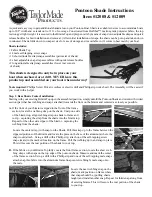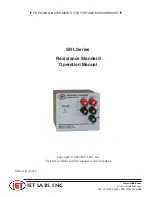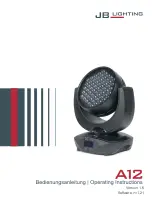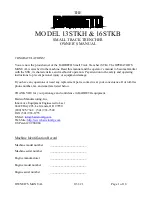
CRIRES User Manual
Doc. Number: ESO-254264
Doc. Version: P109.4
Issued on:
2021-12-01
Page:
21 of 99
Document Classification: ESO Internal Use [Confidential for Non-ESO Staff]
the Nasmyth focus and the spectrometer. It is about 1.5m wide and a top view of the warm
optics overlaid by the optical path is shown in Figure 11, the assembly of the deformable
mirror is displayed in Figure 12 .
3.2.2.1 The corrective optics
The wavefront correction is performed by a 60 electrodes bi-morph mirror developed by
CILAS, with a pupil diameter of 60 mm. The 60 electrodes are sandwiched between two
thin piezoelectric PZT layers with opposite polarization. The outside surface of the PZT
layers is grounded and covered with 0.1mm glass layers, the mirror side being silver coated.
Applying a voltage to one electrode produces a constant curvature over its surface. The
geometry of the electrodes in the 4 central rings (40 electrodes) matches that of the lenslet
array sub-apertures, while the 20 remaining electrodes are located outside the pupil and
constrain the edge of the pupil to correct zero-curvature aberrations: tip–tilt, astigmatism,
etc. The DM provides a stroke to compensate atmospheric aberrations up to an optical
seeing of 1’’. In order to relax the use of the outer electrodes of the mirror, the tip–tilt error
is slowly offloaded to a tip–tilt mount designed and built by LESIA, which provides a
mechanical stroke corresponding to ±3.6’’ on the sky. The assembly of the DM and tip-tilt
mount is shown in Figure 12.
3.2.2.2 The Wavefront Sensor
The following functions are sequentially implemented in the wavefront analyzer:
•
Extraction of the reference star beam (field selector).
•
Projection of the reference star image on the membrane mirror (imaging lens).
•
Scan of the intra– and extra–pupil regions by modulation of the membrane mirror
curvature.
•
Creation of a pupil image centred on the lenslet array.
•
Reduction of the flux to work within the linear range of the APDs by means of neutral
density filters.
•
Re-imaging of the 60 sub-pupils on the 60 fiber cores by the lenslet array unit.
•
Injection of the collected beams onto the 60 APDs.
The scanning lens of the field selector is mounted on an XYZ table: the XY axes enable the
star used for AO correction to be selected within a 25” circle from the slit center, while the
Z stage compensates for the VLT field curvature. The position of the field selector defines
the reference for the pointing. The imaging lens creates an image of the AO star on the
membrane mirror, which is mounted on an acoustic cavity. A voice coil is mounted to the
other end of the cavity and driven at 2.1kHz by the APD counter module to force an
oscillation of the focus mode of the membrane mirror. The incidence angle of the beam on
the membrane mirror depends on the position of the guiding star in the field.
In order to keep the pupil image (obtained when the membrane mirror is flat) centred on the
lenslet array, the membrane mirror is mounted on a 2-axis gimbal mount, which is
coordinated with the field selector. For each (x, y) position of the field selector the gimbal
mount is moved so that the light is reflected to the same focus. A diaphragm in front of the
membrane enables the field to be adjusted to the observing conditions (seeing and guiding
reference size). The assembly of the gimbal mount is shown in Figure 12.
















































